Scrum Reveals Organisational Problems
Explains how Scrum exposes hidden organisational problems through transparency and feedback, enabling teams to identify issues, improve processes, and …
Explore and compare Agile frameworks. Understand their principles, applications, and impact on organisational agility and value delivery.


Agile frameworks are structured methodologies that facilitate the implementation of Agile principles within organisations, enabling teams to deliver value predictably and sustainably. These frameworks, such as Scrum, Kanban, and Lean, provide specific roles, events, and artefacts that guide teams in their work, fostering collaboration, transparency, and continuous improvement. By adopting an Agile framework, organisations can respond more effectively to changing market demands and customer needs, ensuring that they remain competitive and relevant.
The systemic nature of Agile frameworks encourages a culture of experimentation and learning, allowing teams to iterate on their processes and products. This adaptability is crucial for long-term success, as it empowers teams to identify inefficiencies and optimise workflows, ultimately enhancing value delivery. Agile frameworks also promote cross-functional collaboration, breaking down silos and enabling diverse skill sets to contribute to shared goals. This holistic approach not only improves team dynamics but also aligns organisational objectives with customer satisfaction, driving better outcomes.
By embedding Agile frameworks into their operations, organisations can cultivate an environment that prioritises responsiveness and innovation, ensuring they are well-equipped to navigate the complexities of modern product development and market dynamics. The focus on continuous delivery and improvement fosters resilience, enabling teams to thrive in an ever-evolving landscape.
Explains how Scrum exposes hidden organisational problems through transparency and feedback, enabling teams to identify issues, improve processes, and …
Reflects on experiences with Professional Scrum, highlighting its impact on software development, team culture, training, and the challenges of …
Guidance for running effective Daily Scrum meetings, focusing on collaboration, transparency, and actionable planning to help teams achieve their …
Learn how Kanban boosts transparency in software engineering, helping teams visualise workflows, identify bottlenecks, and drive continuous …
Discover how hands-on Scrum training using Minecraft helps learners experience project chaos, apply agile principles, and gain practical insights into …
Explores why Scrum is challenging to master, highlighting cultural barriers, the importance of transparency, and the gap between understanding and …
Explores how Agile has shifted from top-down management to decentralised decision-making, highlighting ongoing challenges and the move towards true …
Explains how Scrum Teams can use Kanban practices to optimise workflow, track flow metrics, and enhance transparency, efficiency, and continuous …
Sprint planning is a collaborative session where teams define and align on goals, tasks, and priorities for the next sprint, ensuring clarity and …
Explains recent changes to Scrum aimed at reducing rigidity, clarifying core practices, and providing a checklist to help teams assess if they are …
Covers a two-day, hands-on Scrum.org course in Alameda, teaching Scrum principles, teamwork, and practical software delivery for all roles in the …
A real-world account of guiding a new Scrum team through their first sprint, covering estimation, story points, sprint planning, and handling …
Explains how empiricism, continuous observation, inspection, and adaptation, drives Agile success by enabling teams to respond effectively to real …
Running an Applying Professional Scrum workshop helps organisations build agile skills, improve teamwork, and adopt Scrum practices through hands-on, …
Explains how the Sprint Goal guides Scrum teams by providing a clear, shared objective for each Sprint, ensuring focus, transparency, and alignment …
Explains why product ownership and product management are deeply connected in Scrum, clarifying their roles, focus on value delivery, and the need for …
Scrum is a framework that helps teams organise and adapt to complex, changing tasks by enabling collaboration and shared goals in uncertain …
Explains how to actively manage Kanban workflows by monitoring work in progress, resolving bottlenecks, and optimising flow for greater efficiency and …
Learn how to customise Azure DevOps to support Scrum teams, manage backlogs, plan sprints, and improve agile workflows with practical setup and …
Explains how a Product Owner can manage Sprint Planning across multiple Scrum teams in Nexus by delegating, using area or team owners, and maintaining …
Learn the three core Kanban principles, visualising workflow, actively managing tasks, and continuous improvement, to boost team efficiency, …
Explains how integrating Kanban with Scrum boosts transparency, limits work in progress, and improves workflow, helping teams identify bottlenecks and …
Explains how Kanban visualises workflows, tracks metrics, and supports continuous improvement, helping teams identify bottlenecks and enhance …
Learn how to define, craft, and achieve effective Sprint Goals in Scrum, using frameworks like SMART and OKR to align teams, deliver value, and …
Limiting work in progress in Kanban helps teams focus, spot bottlenecks, maintain quality, and deliver value efficiently by ensuring a sustainable, …
Explores common pitfalls in early Scrum adoption, highlighting why full team involvement in sprint planning is crucial and lessons learned from a …
A Definition of Workflow explains how work moves through each stage, using clear rules and limits to make progress visible and support team …
Change succeeds when everyone understands and engages with it. Broad Scrum training empowers all roles to identify blockers and drive real, lasting …
Explains why Scrum is a social framework, not just engineering, emphasizing inclusive training, alignment, collaboration, and breaking …
Explores the difference between mechanical and Professional Scrum, highlighting the importance of values, principles, and technical excellence for …
Accountability in Scrum requires real agency; without the power to act, roles like Product Owner and Scrum Master become ineffective and …
Explains how self-managing teams in Scrum need structure and leadership, clarifying the Scrum Master's role in maintaining clarity, alignment, and …
Scrum can drive organisational change, not just product features, by using backlogs, teams, and feedback to enable real, evidence-based agility across …
The FBI Sentinel project failed with a waterfall approach, wasting years and budget, but succeeded rapidly after switching to Agile and iterative …
Clarifies that Scrum is flexible and adaptable, not strictly immutable, and highlights the importance of transparency when modifying its core …
Agnostic Agile is a movement that promotes ethical, context-driven agility by prioritising principles over rigid frameworks. Championed by thought …
Explores why Scrum Masters need authority, not just influence, to enforce Agile practices, remove blockers, and ensure teams follow Scrum for true …
Explains why consistent delivery of usable increments is essential in Scrum, highlighting the Scrum Master's accountability for ensuring transparency, …
Explains the difference between subjective goals and the objective Definition of Done in Scrum, highlighting how clear, measurable criteria ensure …
Explains how true self-management in Scrum requires active, disciplined effort from Product Owners, Scrum Masters, and Developers, not chaos or lack …
Explores the gap between accountability and authority for Scrum Masters and Product Owners, highlighting the need to empower roles responsible for …
Explains how a Scrum Master drives team improvement, removes obstacles, and leads organisational change, going far beyond basic facilitation or …
Mentoring program for product managers and leaders to master Agile, product management, UX, and evidence-based decision-making, with Scrum.org …
Explores how immersive, hands-on learning keeps Scrum students engaged and excited, supporting continuous improvement, real-world application, and …
Explores how agile teams can achieve predictable software delivery through quality focus, effective release planning, and continuous improvement, …
Stop confusing acceptance criteria with definition of done, learn the crucial difference to boost quality, speed, and trust in your agile delivery.
Explains why staggered iterations harm software delivery, increasing technical debt, and recommends cross-functional teams, test-first, and working …
The Definition of Done can evolve to improve quality but should not be weakened or vary per backlog item. Consistency ensures transparency and …
Scrum alone does not cause project failure; lacking strong engineering practices and effective retrospectives leads to technical debt and poor Agile …
Many Scrum Masters lack essential skills and experience, leading to poor agile outcomes. True competence requires deep knowledge, practical …
Learn how to use Kanban flow metrics in Scrum to improve value delivery, track progress, identify bottlenecks, and drive continuous improvement in …
Covers key responsibilities, skills, and requirements for hiring a Scrum Master, including leadership, coaching, facilitation, and fostering effective …
Explains how visualising work in Kanban boosts team clarity, transparency, and alignment, and offers steps to define workflows, avoid misalignment, …
Technical skills are not required to be a Scrum Master, but understanding technical, business, and organisational contexts helps Scrum Masters better …
Learn three key Agile strategies: define clear completion criteria, avoid overcommitting in Sprints, and prioritise backlog refinement for better team …
Explores how true professionalism in Scrum enables Agile teams to deliver production-ready products, highlighting the importance of transparency, …
Explains how effective Scrum Masters empower teams through facilitation, support, and coaching, moving away from authority and micromanagement to …
Explores how teaching the reasons behind Agile practices boosts team engagement, collaboration, and continuous improvement, helping teams adapt and …
Explores how to scale Scrum effectively by applying agile values, fostering professional teams, and adapting processes to fit unique organisational …
Explains the Scrum Master's role in ensuring team delivery by fostering agility, removing blockers, and being accountable for improving team …
We partner with businesses across diverse industries, including finance, insurance, healthcare, pharmaceuticals, technology, engineering, transportation, hospitality, entertainment, legal, government, and military sectors.

Graham & Brown

Akaditi

Cognizant Microsoft Business Group (MBG)

ALS Life Sciences

Brandes Investment Partners L.P.

Trayport

Teleplan

Sage

Alignment Healthcare

Slicedbread

MacDonald Humfrey (Automation) Ltd.

Illumina

YearUp.org

Deliotte

Epic Games

Higher Education Statistics Agency

Emerson Process Management

Freadom

New Hampshire Supreme Court

Royal Air Force

Nottingham County Council

Washington Department of Enterprise Services

Department of Work and Pensions (UK)

Ghana Police Service

Ericson

Qualco

Flowmaster (a Mentor Graphics Company)

ProgramUtvikling

DFDS

Teleplan